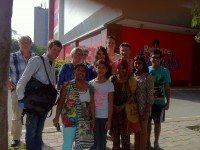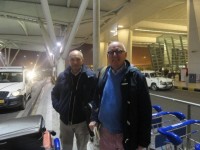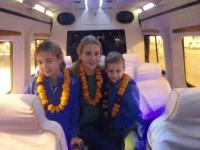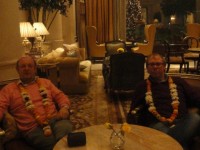
Lucknow
Lucknow, the city of gardens is the capital of Uttar Pradesh. This city is also known as the golden city of east and one of the finest cities of India. Lucknow derives its name from Lakshman, the Lord Rama’s younger brother. Lucknow is situated at an altitude of 123 meters above the sea level on the banks of the Gomati river in the heart of eastern UP and surrounded by the unrelentingly flat Gangetic plain. Lucknow was the principal centre of the erstwhile Awadh province. Even while keeping pace with modern developments, Lucknow has preserved its golden past and its sublime culture – the Lucknawi Tehzib. Lucknow has also been the home of various poets and writers of Hindu-Urdu literature, dance, music and delicious cuisine. The fascinating ‘Chikankari’ or exquisite shadow work embroidery on fine muslin cloth is also known worldwide.
Connectivity
By Air : Lucknow is directly connected by Indian Airlines flights with Delhi, Patna, Kolkata, Gorakhpur, Mumbai, Kanpur and Varanasi with regular flights. The Amousi airport is about 14 km from the city centre.
By Train : Lucknow is on the trunk line and has direct rail connections with Agra, Ahmedabad, Amritsar, Bomaby, Cochin, Delhi, Gorakhpur, Jammu, Puri, Varanasi, etc. The most convenient connection from Delhi is Shatabdi Express – which is air-conditioned.
By Road: Lucknow is well connected by road with all major cities like Kanpur, Ayodhya, Allahabad, Varanasi, Khajurhao, Agra and Delhi.
Some of the major Hindu and Muslim festivals are celebrated in Lucknow. The day after Diwali is celebrated with a great fair and national kite flying competition at the Patang Park. In the month of February, Government organizes the Lucknow festival. Song, drama, dance, processions, boating, ekka races are the main features of the ten day festival with special emphasis on the performance of Indian classical music. Moharram is another festival which is celebrated in Lucknow. This is really not a festival but a period of mourning when huge tazias (replicas of tombs of the son-in-law and grandsons of the Prophet) are taken out in procession by Shia Muslims amidst beating of breasts. The pageantry of the Nawabi days is re-enacted. Fire-walking takes place on one of the nights.
Bara Imambara
The main attraction of Lucknow is the Bara Imambara, also known as Asafi Imambara. It was built by Nawab Asif-ud-Daula in 1784 and one of the architectural wonders of Lucknow. It was constructed to provide employment during a famine. The absence of beams and pillars in the huge main hall is an architectural wonder. Its central hall is said to be the largest vaulted chamber in the world. Except for the galleries in the interior, there is no wood work in the entire structure. It has a charming accurate labyrinths supporting the roof of the edifice, known as ‘Bhul-Bhulaiya’. Here, various visitors are totally lost and so they are strictly advised to visit only with a guide. One could wander through narrow zigzag galleries for hours without finding the way out. Within the compound of the Imambara is the grand Asafi Masjid.
Rumi Darwaza
The Rumi Darwaza is the massive gateway of the Bara Imambara. This colossal and ornated gateway is presumed to be a facsimile of one of the gateways of Constantinople in Turkey.
Chowk
It is the main bazaar in the old city. Here flourish the saris, gold and silver brocades, clay figures, pottery and folk embroidery. It was the haunt of the feudal aristocracy in the old days and is still the place for good bargains. Old ‘Nawabi’ houses are also situated in the area which are still inhabited by patrician families. It is here that the old culture and gracious ‘Nawabi’ manners still persist, that reminds of the 18th century culture of Lucknow.
Chotta Imambara
Hussainabad Imambara, also known as the Chotta Imambara houses the tombs of Muhammad Ali Shah and his mother. This Imambara was built by Muhammad Ali Shah in a florid Saracenic style with a dome, turrets and minarets. This Imambara has numerous domes and minarets. The hall contained a silver throne and is very picturesque when illuminated. The 67 meter high clock tower opposite the Imambara was built between 1860 and 1887.
Dilkusha Kothi
Dilkusha Kothi is set amidst lush green lawns and was built in the Gothic style. The Kothi and its adjoining magnificent garden were created by Nawab Saadat Ali Khan. It is almost an exact replica of an English country house called Seeaton Delavel, built in 1721.















